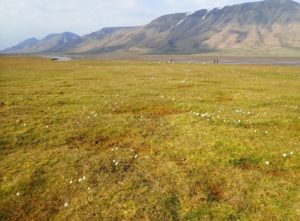In high-arctic tundra, vegetation is facing severe challenges due to climate-change-induced warming, shifts in seasonality and potentially increased herbivore pressure. We expect shifts in vegetation from moss-dominated to vascular plant-dominated communities, as well as species shifts within these groups. While mosses are a major component of high Arctic vegetation that is subject to climate-induced change, we still lack information on the functions that vegetation types with different moss composition exert in high-arctic ecosystems. This study will focus on the development of active layer depth both under a warming climate and on a scenario where mosses are disappearing from the ecosystem.
Project description:
 The aim of this project is to set up an experiment of warming and moss removal plots in two contrasting plant communities, as well as monitoring the effect of warming on active layer depth throughout the summer.
The aim of this project is to set up an experiment of warming and moss removal plots in two contrasting plant communities, as well as monitoring the effect of warming on active layer depth throughout the summer.
The student will join an ongoing PhD project. You will assist with field work. Depending on when you join, this can entail several tasks.
In June, the experiment will be set up in Adventdalen. In each vegetation type, moss removal plots, warming plots and control plots will be established. In summer (July-August) when the snow has disappeared, tasks can vary from measuring active layer depth and soil moisture, to assisting with vegetation recording with the point-intercept method, and polar bear watch.
The project involves:
Fieldwork
Starting date/period:
from 1. June 2021 – to 31. August 2021
Prerequisites:
Able to carry and handle a rifle. Basic knowledge in ecology.
Experience/skills to be acquired:
The student will gain some knowledge on plant species as well as how to conduct abiotic measurements in the field. The student will also learn how to operate in a high Arctic environment where polar bears can be present.
Involvement:
Flexible (max 40h). It is recommended to work at least 7 h/day when being in the field.
Interested by this project? Need more info? Contact:
Sil Schuuring
Project number: 16
